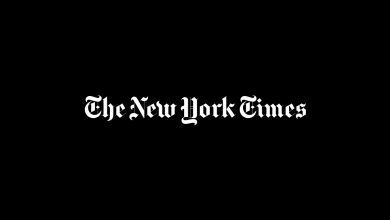What They Saw in Ozy

There’s an irresistible temptation, in this age of scams and hype, to obsess about the man or woman at the center of a company’s implosion. Theranos’s Elizabeth Holmes was the subject of an HBO documentary, and is now the center of a high-profile trial. And when Ozy Media collapsed on Friday, less than a week after The New York Times reported on a series of misleading statements and actions, all eyes turned to the man at the center of the company, Carlos Watson, an ambitious dreamer who seemed to believe in what he was selling. When he spoke with me over Zoom from a California backyard on Sunday, he conceded nothing.
“I put everything I have into this company,” he said. “We tried to do what we could to hopefully live out a set of values about inclusivity and growth and innovation and change and possibility. Those were real things.”
I am sympathetic to people like Mr. Watson and Ms. Holmes — strivers whose dreams apparently led them into deception. If you’ve ever worked for and loved a new institution, you can imagine how hard it would be to let it fail. And it’s easy to see how small lies can become big ones in any part of life.
Just under the surface of the extensive coverage of these executives is the story of those who were charmed by them, and why. Part of the genius of people like Mr. Watson, in other words, is what they reflect back to the people who put up the money. The most interesting part of their stories, always, is the mirror they hold up to the ones who believed.
And so the fall of Ozy — a company that aimed to build a large audience with a general interest website, podcasts, newsletters and online videos (many starring Mr. Watson himself), along with events and TV shows — provides a few insights into the top tiers of the business world. One is how little analysis some investors perform and how much they rely on gut instinct and herd-like validation from their peers.
Want to know how a bunch of seemingly sophisticated people fell for a company that every social media intern in America had questions about? A pitch deck Ozy circulated to potential investors last fall included a graphic featuring the smiling faces of a few high-profile backers: the billionaire philanthropist Laurene Powell Jobs; Marc Lasry, a hedge fund manager and a co-owner of the Milwaukee Bucks basketball team; and Mathias Döpfner, the chief executive of the German publishing giant Axel Springer. Wouldn’t you want to join that club?
The people who were burned by Ozy — corporate marketers and the people whose investments became worthless when the company shut down — were not particularly sympathetic figures. The investors’ loss of millions won’t put them in the work house, much less keep them from going to this or that conference by private jet. The whole Ozy episode seemed to confirm the widely held suspicion that venture capital and advertising may be the world’s least rigorous industries.
And as the dust was starting to clear on Friday, there appeared, to some people who were following along, something fundamentally harmless about the whole affair. One Twitter wag described Ozy as a “not-mean-spirited version of Borat,” in which celebrities had been “pranked into appearing on a talk show that doesn’t exist in order to boost the self-esteem of the company’s founder.”
Not everybody thought the collapse was so funny. Certainly not the 75 employees who found themselves suddenly out of a job after having put in long hours at Ozy’s offices in Mountain View, Calif.
But nobody I spoke with over the last week was more piqued than Roland Martin and Todd Brown, two members of a group led by the mogul Byron Allen that shook the advertising industry this year, with a campaign meant to persuade marketers to spend more money with Black-owned media companies. The effort led to a wave of meetings and the hope that serious ad dollars would start flowing to companies like Mr. Martin’s Black Star Network, a streaming channel.
Instead, the giant ad agencies that steer much of the digital ad business “had found a safe Black space, a comfortable medium — and we were shocked that it was Ozy,” said Mr. Brown, a former head of ad sales of Ebony and Jet magazines whose company, Urban Edge Networks, owns a streaming service for sporting events at historically Black colleges and universities. “It was a story and not a business — but the story is what people wanted to buy,” he said in a telephone interview last week.
Mr. Martin said the campaign he had helped start didn’t wind up driving more advertising dollars to his channel. Particularly galling, he said, in light of the revelations that Ozy had exaggerated the size of its audience, was the reason the advertising agencies gave him when they turned him down: They were not confident that he was measuring his audience rigorously enough.
“I look at the demands they made on me — my metrics, numbers,” he said of the advertising agencies. “Now I’m sitting there going, ‘Y’all made me jump through all these hoops? It was that easy just to lie and make up this stuff?’”
Mr. Watson said in an email that the group led by Mr. Allen had started a “long-needed conversation, and Ozy benefited from that because marketers saw that Ozy’s content was compelling and valuable.”
When Ozy debuted in 2013, it offered a brand of sincere coverage meant to appeal to a bipartisan audience. Therein lay its genius. This hopeful futurism — diversity without the conflict — strongly appealed to the elites who poured in the cash. They also liked being in the company of Ozy’s founder, an executive who had earned his degrees at Harvard and Stanford, had worked at Goldman Sachs and McKinsey & Company, and had put his billionaire investors entirely at ease.
The Ozy website was heavy on earnest stories about young people who wanted to change the world and celebrities being their best selves. Long before Facebook tweaked its algorithm to emphasize what it called “meaningful social interactions” (as The Wall Street Journal has reported in its recent Facebook Files series) but ended up bringing more readers to divisive content, the low-conflict, low-news journalism that Ozy offered appears to have been a hard sell to readers and viewers. Ozy’s content, however, was catnip to brand managers in the consumer packaged goods market.
“My perception is that some advertisers and venture capitalists are much more comfortable attaching themselves to media with lower stakes that is attached to lofty ideas, but not news that’s going to move the needle or challenge the status quo,” said Lauren Williams, the former editor in chief of Vox who left that site to start a news site focused on Black audiences, Capital B. “I think that’s what they saw in Ozy.”
Mr. Watson rejects that analysis. After our conversation on Sunday, in which he was joined by a new public relations adviser, the former Clinton aide Phil Singer, he emailed to dispute it: “Hundreds if not thousands of readers” had reached out to Ozy to say “these topics matter and people want to hear about them,” he wrote. “Social media does favor gossip and breaking news, but the idea that it doesn’t appeal to audiences is sad and wrong.”
It seemed obvious to many outsiders that Ozy’s marketing story was the most compelling thing about it, but the gap between brand and reality was lost on many people in positions of power and influence. Even when Ozy was in damage-control mode during its final days, the Ford Foundation president Darren Walker lent a hand, saying in an email to The Times, “In an increasingly diverse world, it’s no coincidence that a company with co-founders of Black and Indian descent would be so successful.” (Mr. Walker didn’t respond to an inquiry on the company’s implosion.)
A strange feature of Ozy Media was that the content was all real, its journalism was real (albeit light) and the ad revenue appears to have been real, too. Nobody loves this stuff more than advertisers, who are ever in search of news without, well, news.
My reporting continues to uncover instances of possible deception. Those include a company document proposing that an insurance company’s advertising on “The Carlos Watson Show” would appear on Hulu, even though the show was not available on Hulu. A separate document shared with investors attributes a quote in praise of Mr. Watson’s program to The Times — “This show is changing the conversation,” went the quote — that does not appear to have run in this publication. Mr. Watson said he hadn’t seen the document, adding, “If we got it wrong, then that is unfortunate.”
A recent analysis by the social media measurement company Tubular Labs suggests that Ozy spent heavily to boost the number of views for the videos it posted on YouTube by paying to have its videos pop up automatically onscreen.
And even when Ozy offered articles its readers loved and shared in large numbers, it didn’t seem to try to replicate that success, according to a report in the social media-focused newsletter Garbage Day. The articles that were widely shared were “posts about cookies, inspirational stories about elephants, and engaging mini-docs about fashion,” the newsletter reported.
What that left, said a former employee with knowledge of the company’s analytic data, was a real, if tiny, fan base — just not the one Ozy liked to talk about. “The classic demographic for Ozy was a retired female white teacher who used Ozy to stay young and stay woke and loved learning about the world from it,” the former employee said. Samir Rao, the company’s co-founder and chief operating officer, would sometimes joke about bringing in the AARP as an advertiser, the former employee added.
Mr. Rao didn’t respond to a text message, and Mr. Watson denied the claim of the former employee. Ozy’s audience, he said, was “smart millennials and Gen Xers with a strong and growing dose of Gen Z.”
More broadly, Mr. Watson disputed a central challenge to his company’s claims: the idea that there was anything misleading about presenting “The Carlos Watson Show” as a hit show when Ozy was, in fact, paying for views — effectively airing its own programming as an advertisement on YouTube.
Mr. Watson said that was not a problem. “Like all innovative companies (Netflix, Spotify, Tesla and more), we definitely invested smartly in marketing to make sure that our top tier journalism and storytelling was put in front of the right audience,” he said. “We did not want to simply be subject to the vagaries of the algorithms, which is one of the many reasons Ozy is appealing to advertisers.”
Now the investors and advertisers who found validation in Ozy are leaving empty-handed. The employees are no longer getting paid. It was an abrupt fall from a dream, promoted as recently as June to investors, according to a deck shared with me, that the company would be valued at $5 billion in 2025. (You could have bought in at a valuation of a mere $450 million this past summer.)
Those big numbers were part of why Ozy’s board voted earlier this year to allow Mr. Watson to sell off $5 million of his Ozy stock, a reasonable number in the context of a successful company but a giant one given its implosion, three investors said, and Mr. Watson confirmed.
Mr. Watson told me he did not ultimately sell the equity and has “not taken a dime off the table.”



